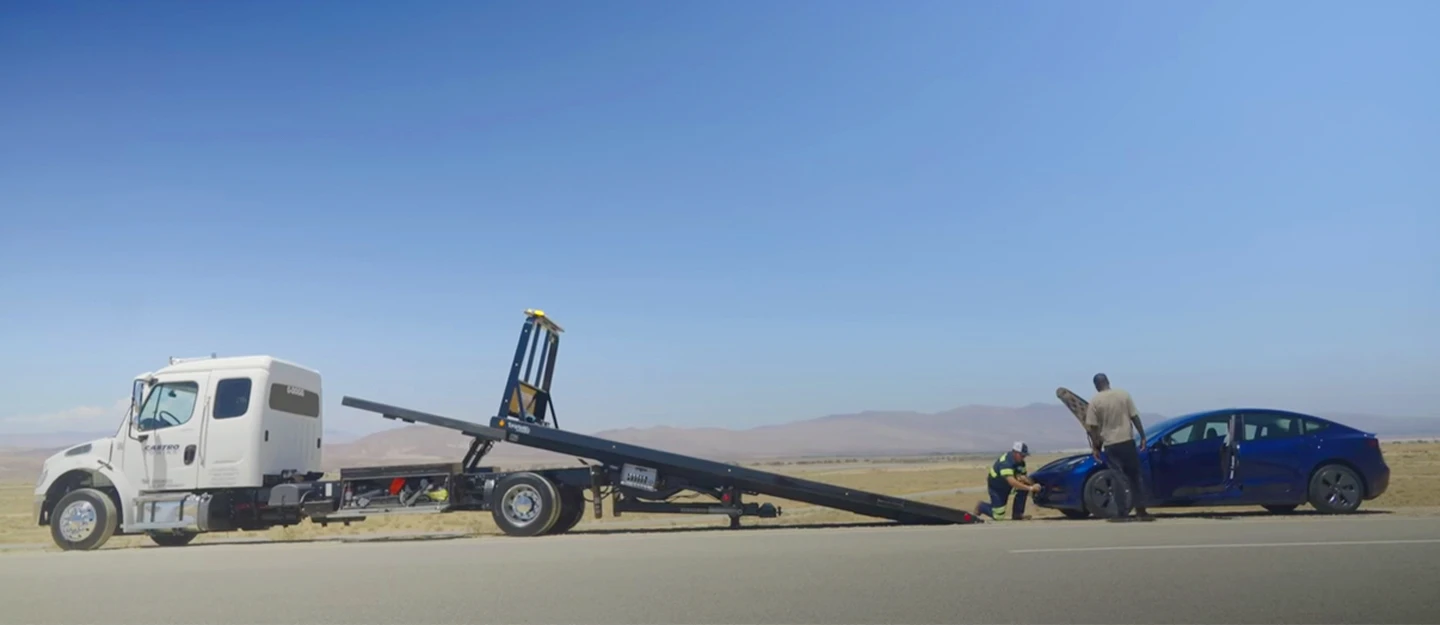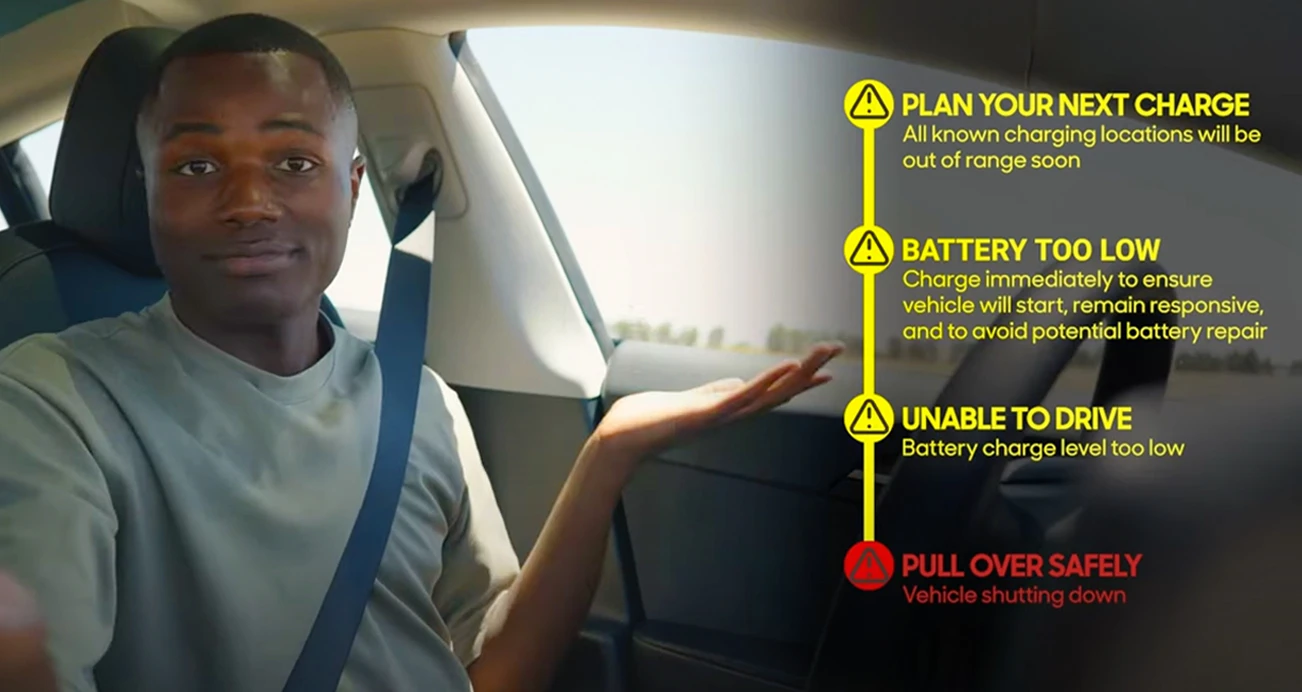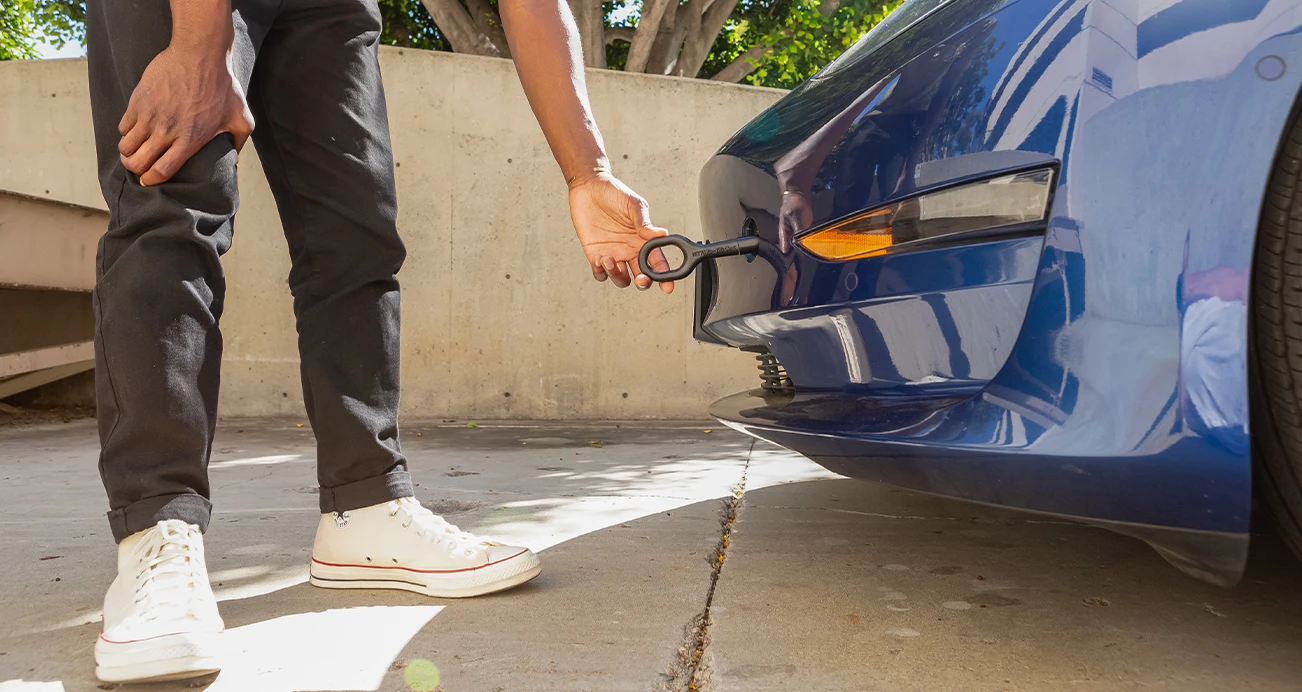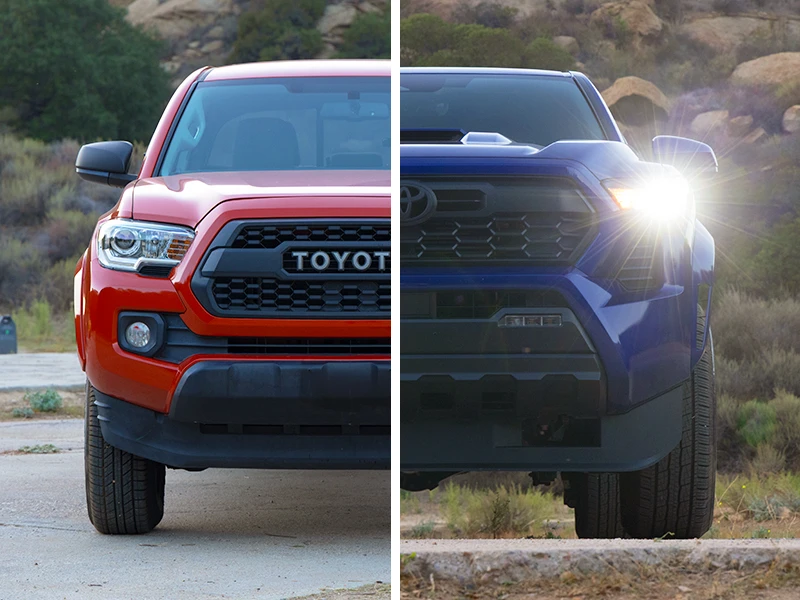
Battery indicators, turtle mode, and roadside help.
With thousands of vehicles in our inventory, we’re here to help make car research easier for you. We’ve partnered with car-review experts from Edmunds to weigh in on what matters most when you’re looking to buy a truck or car.
***
There are a lot of things to like about electric vehicles (EVs). They’re quiet, roomy, high-tech, efficient, and you can “fill them up” them at home. Not to mention the thrill of driving something cutting-edge. But life with an EV isn’t all roses, and one of the biggest concerns with electric cars can be summed up with two words: range anxiety. From rural lifestyles to city living, the question remains the same: Does your electric car have enough driving range to get you where you need to go?
If you’ve never driven an EV, the thought of the battery dying and leaving you stranded can be stressful. We get that what happens when an electric car’s battery runs out is a big unknown for a lot of people, but it doesn’t have to be. As it turns out, when an EV’s battery gets to 0% it’s not quite as dramatic as you might think. In fact, we drove an EV to 0% charge and beyond to find out what happens. In this article, we’ll show you what to expect as your EV’s charge gets low and, eventually, runs out.
What happens when an electric car battery gets low?
Exactly what happens as an EV battery approaches 0% and eventually dies varies from manufacturer to manufacturer. But generally speaking, you can expect the following as your battery gets to zero.
Lots of warnings

Everyone who has driven a gasoline-powered car before has likely seen that little yellow fuel light on the dash when the gas gauge needle gets close to empty. We all know what to do: Find the nearest gas station and fill 'er up.
With EVs, things are a little different, and you get a lot more warning. An electric car will begin letting you know the battery is getting low somewhere around the 20% charge mark, and it will gradually increase the urgency of the warnings as the charge gets lower and lower. Depending on the manufacturer, the battery indicator may change color and you may be prompted to find a charging station on the car’s navigation system (if it has one). Other prompts may appear to encourage you to find a place to charge as soon as you can and indicate how much remaining range you have to do so.
Electric vehicles give you more warnings because charging an EV isn’t quite as convenient as filling up a gas-powered car. There aren’t as many stations for starters, and even fast charging takes more time than filling up a gas tank. So in a classic “help me help you” scenario, your electric car gives you plenty of warning to plan a little side trip to a charging station as soon as you can.
0% charge
If you go long enough, eventually your battery indicator will read “0%.” But that doesn’t mean your battery is completely dead yet. Just like a gas gauge points to “empty” before the tank is totally dry, electric cars usually indicate zero before the batteries are totally drained, and in our testing, we were able to go 15 extra miles. That extra capacity is there for the same reason a gas car has a little extra: to let you get somewhere you can refuel ASAP.
The thing is, you can’t bank on that reserve charge giving you a certain number of miles. If it’s a cool day and you’re in an area with relatively flat terrain, you may be able to go for quite a few miles before the battery truly gives up. But if you’re in a hilly area on a hot day? Your reserve miles are going to be notably fewer.
What happens when an electric car battery dies?
Compared to a gas-powered car running out of gas, electric cars slow and stop in stages when they run out of charge. When the fuel tank on a gas-powered car goes dry, the reaction is sudden. The engine stops, and things like power steering and power brakes stop working. The car slows dramatically because it’s likely still in gear, and before you know it you’re stuck in the middle of your lane, blocking traffic.
Running out of juice in an EV isn’t nearly as dramatic. If you’ve somehow managed to miss all the warnings your car has thrown at you and driven past the little bit of reserve charge in the battery after it hits that 0% indicator, the process is actually pretty gradual.
Limited speed
The first thing you’ll notice is that the car will go into a “turtle” mode, so named because of the turtle icon displayed on the dash in some EVs. Why a turtle icon? Because you’re going to slow down.
That turtle icon indicates the EV’s battery is about to run out and it's trying to squeeze as much driving range as possible out of the small amount of charge remaining. Limiting speed also gives you time to safely get to the side of the road or pull into a charging station before the battery truly runs out of energy, so you don’t become a traffic hazard. In addition to turtle mode, you’ll get multiple insistent warnings about battery charge expiring, needing to pull over and find charging ASAP, and so on.
Full stop
Eventually, the car simply can’t go any farther, and after gradually slowing to a crawl it will stop completely. Hopefully, you’ve paid attention to the various warnings and have pulled to the side of the road. As anticlimactic as the buildup to a dead battery can be, the final shutdown can be a little dramatic, as the car will put itself into park to prevent it from rolling away.
However, a dead battery doesn’t mean the car is suddenly a paperweight. A few things like power windows, door locks, and your parking brake, along with your navigation system (so you can tell the flatbed where to come get you), should still function for a little while, just like they would on a gas-powered car. You simply can’t drive anywhere.
Can you tow or push an electric car?

Electric cars can be shifted into neutral and pushed over short distances, and they can be towed, but only on a flatbed truck.
If you do find yourself stranded with a dead EV battery, you really only have one option: Call a towing company to get you to a charging station. Many roadside assistance programs cover this kind of service for free. Most importantly, be sure to inform the towing company that you’re driving an EV and that you need a flatbed to come get you. EV manufacturers will tell you outright that towing their products with the kind of tow truck that only lifts one pair of wheels off the ground — and lets the other two wheels roll on the pavement — can seriously damage an EV because the electric motors will generate power and heat as the wheels on the road spin. So get that flatbed!
If the car’s battery is dead, and it has put itself into park, how are you going to get it on the truck? Manufacturers have thought of this, and there’s a special service mode you can activate that will put the car into neutral so it can be pushed or pulled over short distances to maneuver it onto the flatbed.
Once at the charging station, simply plug in and wait. Perhaps your emergency kit should include a good book to read?
Can you delay a dead battery?
The best preventive measure you can take is to be sure you have enough charge to get where you’re going, plus a little in reserve for unexpected side trips. There’s no universal rule for that—it’s something you need to figure out for yourself and your lifestyle. But plugging in at night and letting your EV charge at home is one of the smartest moves you can make to ensure you have enough energy for the next day's travels.
Once the battery starts to get low, unfortunately there's not a lot you can do. Relying on regenerative braking can help, and if your car has a one-pedal driving mode, that may help you add a few extra miles. But once your car starts tugging on your sleeve for a recharge, the best thing you can do is heed the warning and find a station.
How far can an electric car go?
Most current electric cars offer driving ranges between about 230 and 350 miles, with a few outliers with ranges as low as 100 miles or as high as 500 miles. That can get a little more complicated with used electric cars, since some older EVs offer less range, and the batteries in some of those older models were more prone to losing range over time.
The wide availability of EVs with more than 200 miles of range means most drivers will be able to find an electric car that will have no trouble meeting their average daily driving needs, so you shouldn’t have to worry about running out of juice. However, it may be an issue if you want to take a longer road trip in your EV. Charging stations aren’t as ubiquitous as gas stations yet, so you’ll need to take time for a little extra planning to make sure you can stop for juice on the way. If you want to find out more about EV batteries and the longest-range cars for your budget, we’ve got you covered.
Conclusion
The reality is that winding up in this situation is highly unlikely, particularly once you’re familiar with the charging options available to you. The vast majority of EV buyers charge their vehicles at home, so they start their day with plenty of juice for their daily activities. Of course, buying an EV with the kind of range your lifestyle requires is important. But all you need to do is keep an eye on that charge meter, just like you would a gas car’s fuel gauge. If it starts to get low, finding a charging station and spending a few minutes adding some electrons is a lot less hassle than letting your car die completely.




